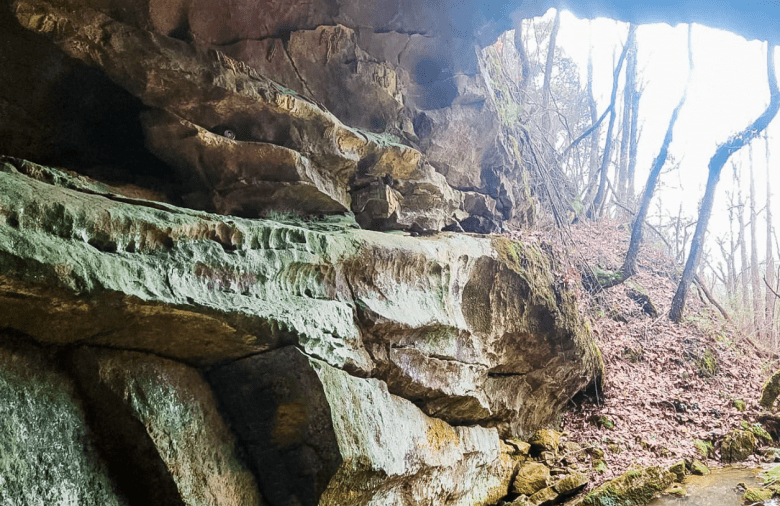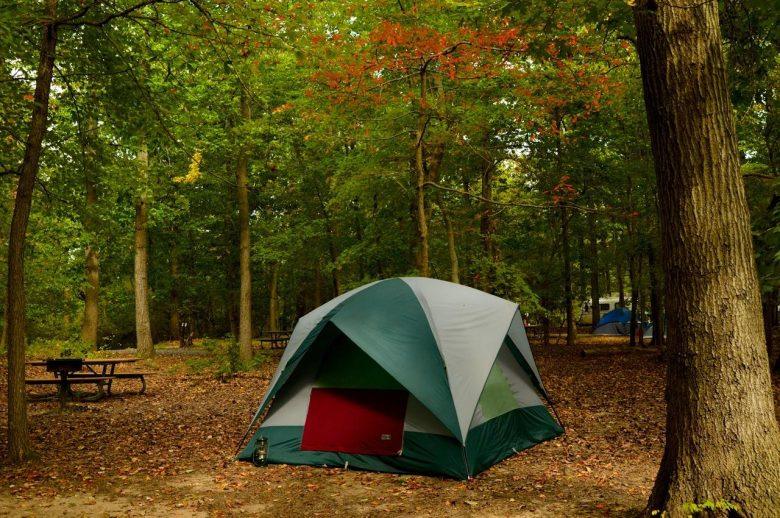Introduction to Kuwohi (Formerly Clingmans Dome)
If you’re planning a trip to the Smoky Mountains, chances are you’ll hear about Clingmans Dome. But you may also come across the name Kuwohi. So what’s the difference? Are they the same place? In short – yes, but the story behind the names is important and worth understanding.
Clingmans Dome is the highest point in Great Smoky Mountains National Park. It rises 6,643 feet above sea level and offers one of the most stunning panoramic views in the entire park. On a clear day, you can see up to 100 miles in every direction, across seven different states. It’s one of the most visited spots in the Smokies for a reason – easy access, a paved trail to the top, and unbeatable views.
But before it was ever called Clingmans Dome, the Cherokee people – the original inhabitants of this land – called it Kuwohi (pronounced koo-WO-hee). In the Cherokee language, Kuwohi means “Mulberry Place.” The name reflects how the Cherokee viewed this mountain: not just as a landmark, but as a sacred and living part of their world.
The mountain was renamed Clingmans Dome in the 1800s after Thomas Lanier Clingman, a Confederate general and U.S. senator from North Carolina. He had a hand in mapping and measuring peaks in the area and claimed this mountain as the tallest in the Smokies — and wanted it named after himself. But that name, Clingmans Dome, erased centuries of Native history tied to the land.
In recent years, there’s been growing support for officially restoring the name Kuwohi in honor of the Cherokee Nation and the mountain’s deeper cultural roots. While most signs and maps still say “Clingmans Dome” for now, you might start seeing Kuwohi more often as awareness grows and change is requested. Using the name Kuwohi is one way to honor the people who lived here first – and still do.
So when you visit, you’re not just heading to the highest point in Tennessee. You’re stepping onto a mountain that carries generations of stories: natural, historical, and spiritual. Whether you call it Clingmans Dome or Kuwohi, it’s a place that leaves a lasting impression.
Kuwohi Trail (Formerly Clingmans Dome): Directions and Parking
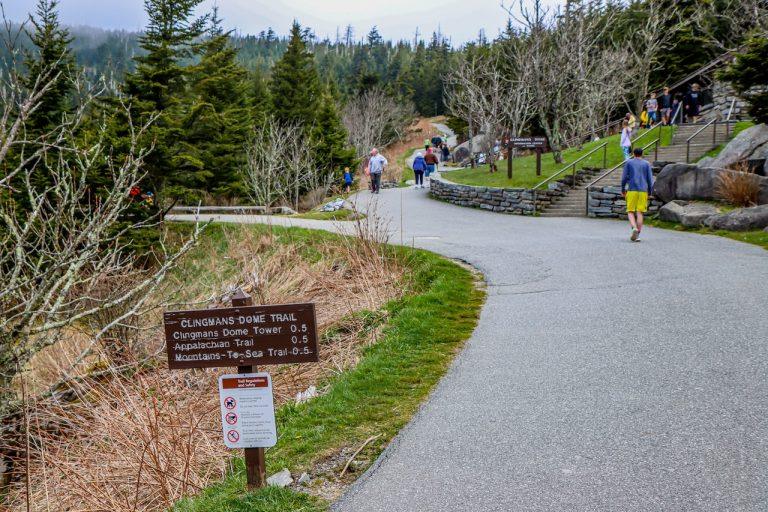
How to Get There:
- From Sugarlands Visitor Center (near Gatlinburg), drive 13.4 miles south on Newfound Gap Road (US-441).
- Turn right onto Clingmans Dome Road, then continue for 7 miles until you reach the large parking area at the end.
- From the lot, the trail begins near the visitor center and leads uphill to the observation tower.
For official details and updates on this trail, check the Gatlinburg tourism page here.
Parking Lot Information
Clingmans Dome (Kuwohi) has one main parking area at the very end of Clingmans Dome Road. It’s a large lot, but it fills up fast – especially during peak seasons like summer and fall. The lot is paved and includes designated parking spots for standard vehicles and a few for oversized ones, though trailers, buses, and RVs are strongly discouraged due to the narrow and winding road.
Restrooms and the visitor center are located right next to the parking lot, making it a convenient stop before or after your hike.
Important: As of 2023, a parking tag is required for any vehicle stopping for longer than 15 minutes in Great Smoky Mountains National Park. You can purchase a tag online or in person. Tags are available for daily, weekly, or annual use. More details can be found on the NPS website.
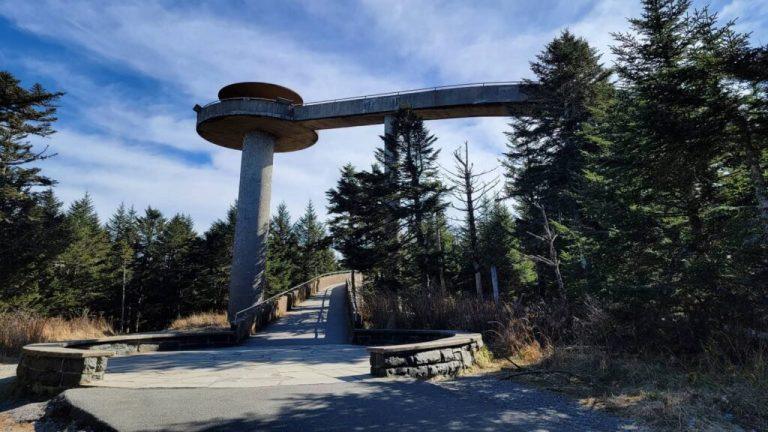
Tips for Busy Days
- Arrive early (before 9 a.m.) if you want to find parking easily, especially on weekends or in October when the leaves change.
- Avoid peak hours between 11 a.m. and 3 p.m. when the lot is most crowded.
- If the lot is full, you may be asked to loop back or wait – there is no overflow parking nearby.
- Visit during weekdays for a quieter experience and more open space.
- Consider shoulder seasons like late spring or early fall for easier access and lighter traffic.
Need help navigating there? Use the Sugarlands Visitor Center as your starting point and follow Google Maps directions here.
Best Time to Visit Kuwohi
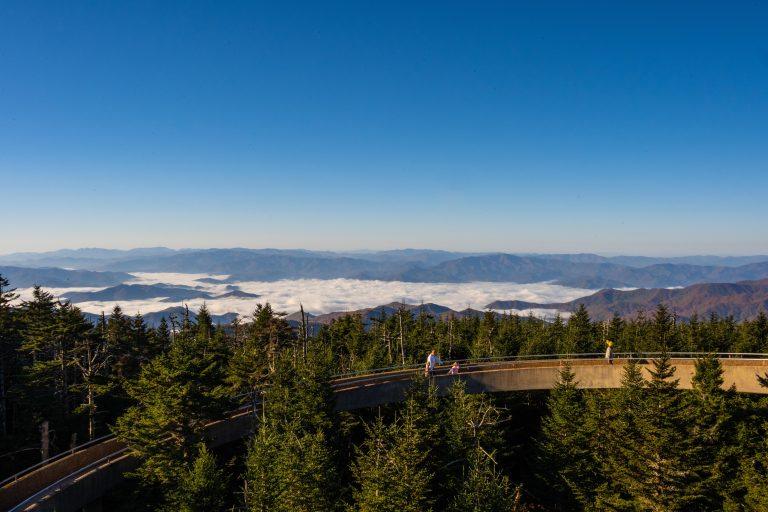
Kuwohi is open year-round, but the experience changes depending on the season. Since it’s the highest point in Great Smoky Mountains National Park (elevation 6,643 feet), the weather can be very different than what you’re used to at lower elevations. Whether you want clear views, fewer crowds, or a chance to catch sunrise or sunset, timing your visit right can make a big difference.
Weather and Seasonal Considerations
Spring (April–May):
This is a beautiful time to visit as wildflowers start blooming across the park. The trail can still be chilly and damp, especially early in the season, but the crowds are usually lighter than summer. Snow is still possible in April at this elevation, so bring warm layers and check for road closures before heading up.
Summer (June–August):
Summer is the busiest season. Temperatures are cooler at the top than in Gatlinburg or Pigeon Forge, often in the 60s or low 70s even when it’s hot below. Expect crowds during the day, especially around midday and early afternoon. Mornings and evenings are your best bet for a quieter walk and better visibility.
Fall (September–November):
This is peak season for leaf-peeping. The colors usually show up in late September and early October at higher elevations. It’s a stunning time to hike, but also the most crowded. Plan for early arrivals or weekday visits. Temps drop fast once the sun sets, so bring a jacket.
Winter (December–March):
Clingmans Dome Road closes from December through March due to snow and ice, so you won’t be able to drive all the way up. If you’re up for a longer winter hike (7 miles one way), you can still reach the tower by foot or cross-country skis. This is best for experienced hikers only.
You can check current road status and seasonal updates at nps.gov/grsm
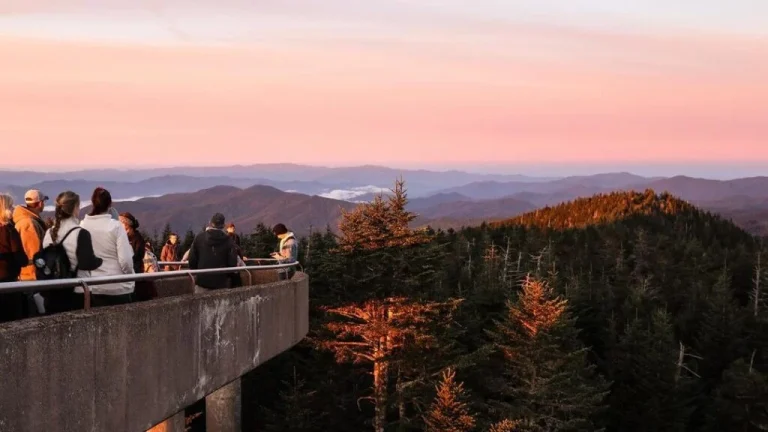
Best Times for Sunrise or Sunset Views
Clingmans Dome / Kuwohi is known for its dramatic sky views. Because of the high elevation and wide panoramic angle, sunrises and sunsets hit different up here — especially when clouds roll through the valleys below.
- Sunrise:
Arrive at least 30 minutes before actual sunrise time to walk the trail and catch the first light. Expect fewer crowds, chilly temps, and peaceful views. Best in late spring, summer, and early fall when the road is open early enough to get there in time. - Sunset:
The sun sets behind layers of mountain ridgelines, giving the sky deep oranges and purples. Sunset tends to be more crowded, especially in fall, so arrive early for parking. Bring a flashlight or headlamp for the walk back down if you plan to stay late.
| Pro tip: The weather at the summit can change fast. Even if it’s sunny in Gatlinburg, Kuwohi might be cloudy or fogged in. Always check the forecast before heading out.
Tips for Visiting Kuwohi
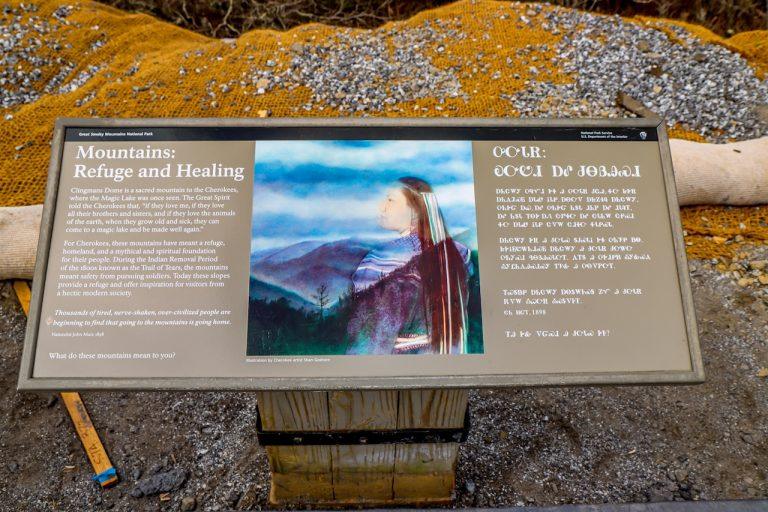
What to wear, what to bring, and how to be ready for mountain weather
Whether it’s your first time visiting or a repeat trip to Kuwohi (formerly Clingmans Dome), a little prep goes a long way. The trail may only be 1.3 miles round-trip, but due to the high elevation and steep incline, it can feel more intense than expected – especially for those not used to hiking. Below are helpful tips to make your visit smoother and more enjoyable.
What to Wear and Pack
- Wear sturdy walking shoes or sneakers.
The path is paved but steep. Good grip helps, especially on wet or misty days. Hiking boots aren’t required, but avoid flip-flops or slick soles. - Layer your clothing.
Even in the middle of summer, temperatures at the top can dip into the 50s or 60s. Bring a light jacket or hoodie just in case. - Pack water.
There are no water fountains along the trail. A reusable water bottle is perfect for staying hydrated during the incline. - Sunscreen and sunglasses.
You’re over a mile above sea level – UV exposure can be stronger than you think, even on cloudy days. - Snacks or small bites.
Especially if you’re visiting with kids or planning to stay a while to enjoy the views. Just remember to pack out all trash. - Camera or smartphone.
The views from the top are photo-worthy on a clear day, with layers of mountain ridges stretching as far as the eye can see.
Weather Preparation Tips
- Check the forecast before you go.
Kuwohi’s weather can be drastically different than lower elevations. It’s not uncommon to have fog, wind, or cooler temperatures even when it’s sunny down in Gatlinburg or Pigeon Forge. - Plan for clouds or limited visibility.
The mountain is often shrouded in clouds. While this can make the views disappear, it also creates a dreamy, otherworldly vibe — especially in the early morning. - Bring rain gear just in case.
Afternoon showers are common in the Smokies during warmer months. A small poncho or waterproof jacket can come in handy.
For real-time updates on conditions, road closures, and safety info, visit the Great Smoky Mountains NPS Current Conditions Page
Accessibility Information
- Trail surface:
The main trail to the observation tower is paved the entire way, but it is very steep. The incline may be challenging for wheelchairs or those with mobility issues. - ADA access:
While the trail itself is not officially ADA accessible due to the steep grade, there is limited accessibility near the base and visitor center for those who cannot make the climb. - Restrooms:
Vault toilets are available near the parking area and visitor center. - Benches and rest spots:
There are a few resting points along the trail, but they are limited. Take breaks when needed, and don’t rush.
Parking:
Designated accessible parking spaces are available near the visitor center at the trailhead. However, spots fill quickly during peak times.
Final Thoughts on Visiting Kuwohi
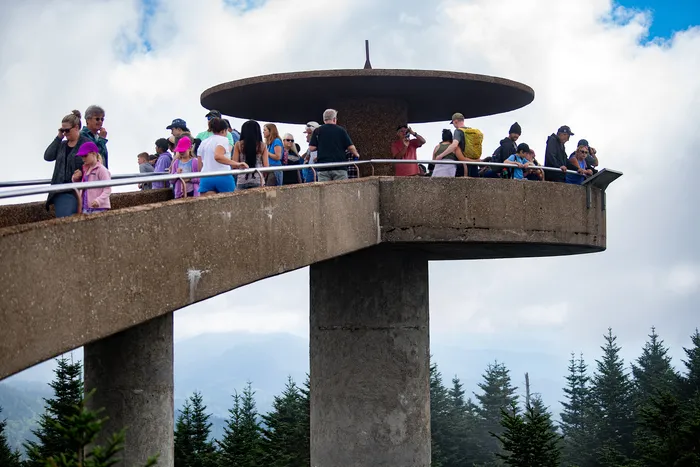
Whether you’re chasing panoramic views, exploring one of the Smokies’ most iconic spots, or learning more about the land’s deeper history, Kuwohi delivers a powerful experience in just a short hike. It’s more than just a photo opportunity – it’s a chance to stand at the highest point in the Great Smoky Mountains National Park, breathe in cool mountain air, and take in views that stretch across Tennessee and North Carolina.
Kuwohi is open year-round (weather permitting), but each season offers something different – from crisp fall foliage to peaceful spring wildflowers. No matter when you go, be prepared, give yourself time to enjoy the trail, and take in the natural and cultural beauty around you.
Where to Stay
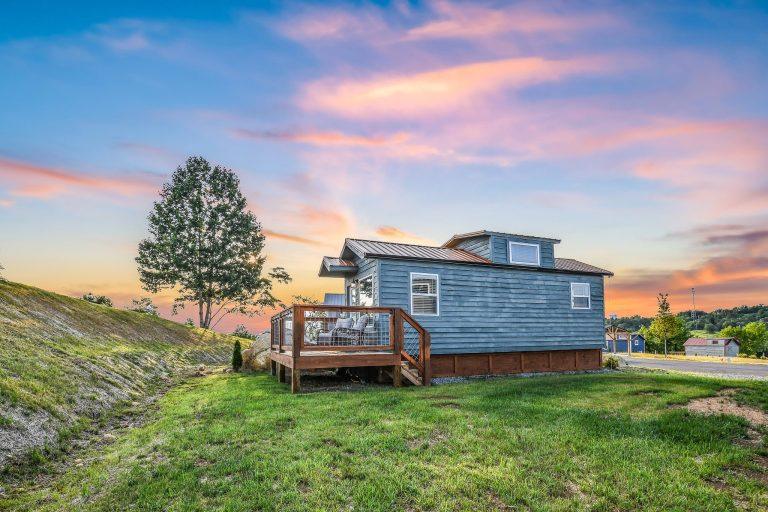
While Kuwohi sits high above the Smokies at the state line, you’ll still find plenty of quiet, comfortable places to stay in Sevierville – about 40 minutes from the Sugarlands Visitor Center, where your drive to the trail begins.
At Sojourn Lodging, we offer a nature-inspired place to recharge after your mountain adventure. Our tiny homes are tucked into the peaceful edge of Sevierville, giving you a calm and cozy space to rest without being far from the main attractions in Gatlinburg or Pigeon Forge.
Each unit is designed for simplicity and ease, with private decks, kitchenettes, comfy sleeping areas, Wi-Fi, and smart TVs. Whether you’re traveling solo, as a couple, or with a small group, Sojourn gives you the space to breathe after a day on the trail.
What We Offer:
Pet-friendly tiny homes
Peaceful, wooded surroundings
Self check-in and private entry
On-site parking
Units designed for couples, families, and groups
After hiking to the top of Kuwohi, watching the clouds roll across the peaks, and breathing in that crisp mountain air, there’s no better feeling than having a clean, quiet space to come back to.
Want a closer look? Click here to explore our tiny homes or read more about what it’s like to stay at Sojourn.

